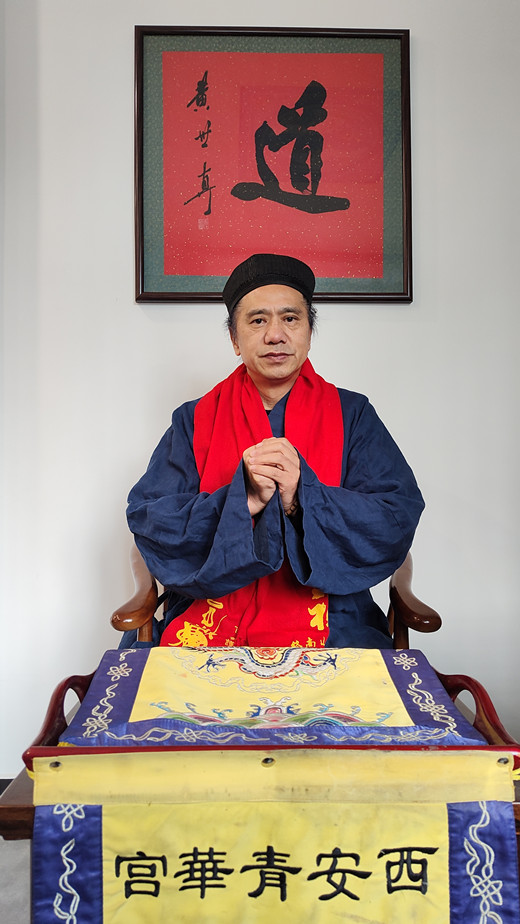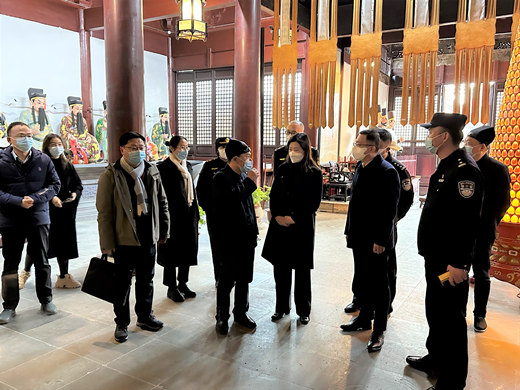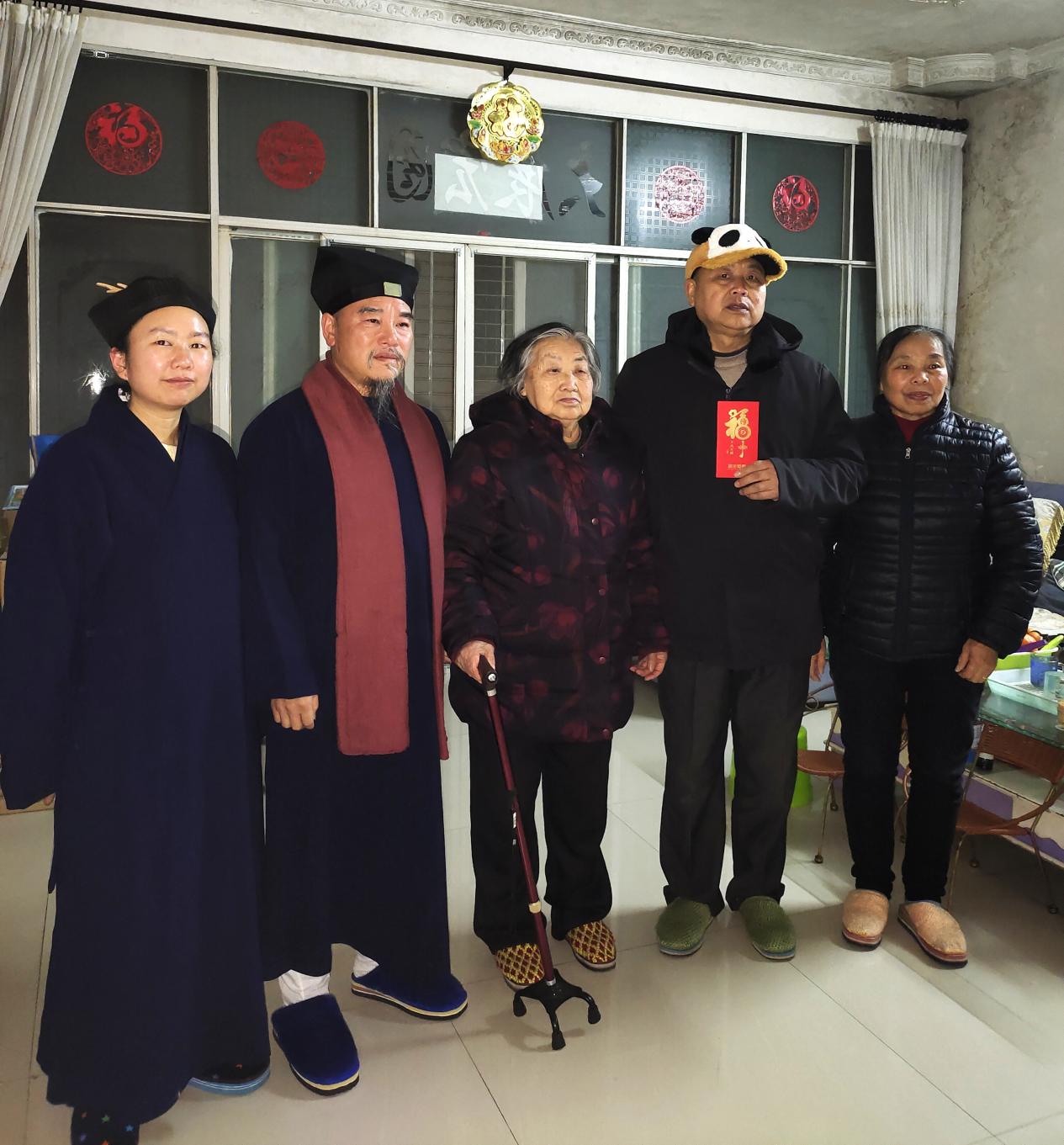New agents and new ethos of Daoism in China today(3)
道教之音 Yang Der-Ruey
2015-10-20
Although most of the superficial characters, i.e. the location, spatial layout, appearance, job titles, etc., of the Wanli Company are similar to those of a normal gifts and articrafts shop in China today, its daily practice is in fact far more resemble to that of a small temple. Master Ris ing Sun himself is the ultimate source of all the income this company could earn. Based on his expertise on fortune-telling, divination, geomany, and almanac reading skills, he provided consultant service to dozens of client virtually every day. Almost all the clients are introduced to him via his disciples and so the old Master regarded them as “younger friends” instead of cu stomers. Certainly, he won’t charge any money for his consultant service and so the benefitted clients have to find out some other ways to repay their moral debt to Master Rising Sun. Consequently, some choose to spend generously on the articrafts being sold in the shop, some choose to offer business opportunities that were promised to be high-profit and low-risk, and some eve n decided to pay homage to the old Master and turned themselves into his “ sujia dizi ” (literally, “disciples in the secular world”, means “non-cleric disciples”). In other words, the Wanli Company actually worked pretty much like a “zisun miao ” (literally “temple of sons and grandsons”, means the small temples belonging to the presiding master wherein he can train disciples) belonging to Master Rising Sun. The four full-time employees ac tually functioned like his disciples whose job really is to serve the Master well and to learn from him as much as possible instead of doing any real business independently.
Now, let’s take a glimpse on how the Wanli Company makes money. The story began from a couple of years before the company was found when Master Rising Sun and effectively the entire network of his disciples were involved in the founding of a monastery in memorial of Master Bai Yuchan (1194 - ?) in Hainan Province via Mr. Mu’s connection. During the process, Master Rising Sun got to know and finally initiated the leaders of Gangmao Company, a small trading company based in Hainan that deals mainly articrafts imported f rom Vietnam, such as woodcarvings, carved stones, and lacquerware, to be his non-cleric disciples. Because of this relationship, the Wanli Company has Vietnamese articrafts in store for sale ever since it was found. A few months later, the Wanli did manage to sale out some products from Gangmao thanks to the indirect marketing skill of the old Master. Then, Master Rising Sun gave those leaders of Gangmao some metal and stone carvings made by local artisans according to Mr. Mu’s design as gifts when they came to visit him in Wanli. As we would expect, these non-cleric disciples from Hainan would definitely try to pay back the Master by purchasing a lot more items from Wanli upon their departure. Not long after that, when the Chinese New Year is approaching, the old Master composed and sent out a long text message to all his acquaintances about how to get success in the coming year, in which he specifically men tioned the geomantic effects of metal and stone carvings. Then, several da ys later, Wanli got a sizable order for metal and stone carvings from Gangmao again.
Due to the limit of space, we cannot help but to end the first case here. Now, let’s summarize the key lessons we could draw from this ca se for the main concern of this paper. First, this network is a new type of agent in the social sphere named “Daoism”. Because its members are mostly non-cleric disciples who get married and have their secular career, it is far different from traditional Daoist orders or modern Daoist association tha t are exclusively for professional clergy and must based themselves o n temples. This essential difference leads to other distinctive features such as trans-locality, mobility, equalitarianism, and horizontalizatio n, which stand in a sharp contrast to the local, sedentary, hierarchical, and centralization character of both traditional Daoist orders and modern Daoist association. Secondly, for this network, promoting Daoism is no t just about propagating Daoist teaching but also about the development of the instrument for propagating Daoism – “Daoist enterprises”, whether temples or any other type of profit-making corporation. It plays down or, more precisely, deliberately blurs the distinction between “doing religion” and “doing business”. It should be acknowledged here that this doesn’t mean that it simply uses religion as the means for material gain. At least, it’s just as reasonable to say that it tends to use business as the instrume nt for pursuing other moral values, such as creating a company for filial piety as well as for promoting Daoism.
films makers, pop singers, actress, and CEOs of some large dot. com companies.
Besides, the disciples’ network centering on Master Zhang, the abbot of the historic Tongbo Palace on the Mount Tiantai, Zhejiang, and the one under the aegis of Master Yu, the founding patriarch of the “Southern Wud ang Mountain” in Hubei Province, are also very active during the recent years . Apart from the aforementioned top-level senior Masters, there are hundreds or even thousands of younger-generation Daoist “masters” trying to build up similar network of their own. Mount Mao in Jiangsu, Mount Lao in Shando ng, Mount Luofu in Guangdong are among the most vibrant hubs of those ambitious Daoist practitioners.
Case 2 Watergate Mazu Temple
The second case comes from the Wudu City in Jiangsu Province, a quickly burgeoning metropolitanconsists of over7.5 millionpopulation according to the official statistic data released in 2009. Just as the section t itle has shown, this network is evolved around a temple. Therefore, the readers might draw from historical experiences and expect that it would be a localized, sedentary, and hierarchical network which stands in a sharp contrast to the previous case. However, as we will see below, although this network does have a concrete geographical center – the Watergate Mazu Temple – as its nexus, it is by no means a local-bound or a hierarchical network. Certainly, th e distribution of power, wealth, and knowledge endowments among the constituen ts of this network is just as uneven as any other social grouping could be . But, since there is neither centralized decision-making mechanism nor any binding obligation for the constituents, it’s simply too costly to convert the differences in endowments to any substantial hierarchy. Given the marginal status of Daoism in Wudu, it’s very unlikely that there will be any serious attempt to change the status quo.


 |
|










 京公网安备 11010202006208号
京公网安备 11010202006208号